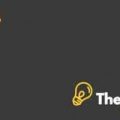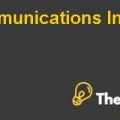
External Analysis
Porter’s Five Forces
Threat of a New Entrant
A compatible of amount of threat was measured in the particular industry of EHI, however due to the vast field of healthcare and huge investments involved, the threat of a new competitor is high. Even for Target System who has been in a similar field of consultation, the company finds it difficult to enter EHI because of great expertise and information is required in running the business. Many companies evaluate between the two options in entering the EHI market. First option is based on developing the core competency, or creating a strategic alliance with different companies involved in particular business. The first option requires huge investment, whereas, the second option is feasible but requires ample amount of skills to managing good relations with the strategic partner (Saranto, 2009).
Threat of a New Substitute
There were not many substitutes for managing the computerized data of patients in the EHI medial industry because of limited knowledge. The company and physicians would adopt the paper method in maintaining the records of their patients. Although in many states and cities of the United States, majority of the market still uses the particular substitute (Saranto, 2009).
Competitive Rivalry
A strong competitive rivalry was found in the EHI system integration. A total of 9 competitors were found strong in the industry that had been well dominated of about 90% of the market in hospital systems. Since 2002, it had been reported that very few of the health institutions about four of them inducted a computerized medical information. However, the particular percentage grew in 2008 with only 1.5% of the hospitals and medical institutes inducted the particular computerized systems. The penetration from competitors were lower in the particular market, which makes it easier for the company to enter in the market with strong hold. While considering the individual physicians, the percentage of user for HER is comparatively lower because of huge financial investment and capital (Johnson & Carleen, 2010).
Bargaining Power of a Supplier
The bargaining power of the supplier tends to be stronger after the act of HITECH. Since then, many institutions and physicians have been approaching EHI providing companies to provide them the services of computerized healthcare management. However, it has been predicted that the companies and physicians in the particular industry would tend to increase, but still the bargaining power of supplier would be on the higher note because by 2008 only 1.5% of the institutions applied the EHI system. Therefore, companies have to cater a larger market (Johnson & Carleen, 2010).
Bargaining of a Buyer
Previously before the act of HITECH, the bargaining power of buyers were high because very few of the institutions applied and managed EHI. However, since the bill has been passed all of the institutions have to apply EHI in the institute which makes them dependent on the supplier. Due to the increase in computerized medical data and information in the 21st century, it has become increasingly important for companies and institutions to follow the particular guidelines for data management (Johnson & Carleen, 2010).
PESTEL Analysis
Political
As Target System earned 90% of its revenues and contracts from the government department, therefore it had to maintain a strong customer relationship. The relationship between a government and the company is based on mutual trust. According to the Bill of HITECH Act, the government of the United States prodded the physicians to use the EHI system to effectively maintain the patients’ data. The bill encouraged the physicians and the institute to utilize the EHI for a better data management.
Economical
The EHI system was expensive as the entire system comprised of 16% if the GDP of the United States. The EMR system that has been adopted by individual physicians also require additional payments and monthly fees to maintain the particular data. Therefore, it becomes increasingly difficult for individual physician to invest heavy amounts in maintaining its patients’ data, while the institutions can easily make payments for their IT system.
Social
The work environment for EHI needs to be more social and interactive with the client in order to maintain long term relationship and future steady growths. Due to the individual physician market, the probability of increased social relationship shall also be increased in targeting its customers effectively.
Technological
The healthcare technological system is expensive in the United States market because it had to meet many technical standards and other requirements. In the early 1990’s, the EHI did not had the technology for making reports regarding the healthcare of a patient. However, in the year 1990 the institute was able to generate reports through the use Electronic Medical Records (EMR) and since then the technological concept in the healthcare industry was evolved by the name of Electronic Health Records (EHR). The HER report would also reveal the financial and demographic information of an institute................................
This is just a sample partial case solution. Please place the order on the website to order your own originally done case solution.













